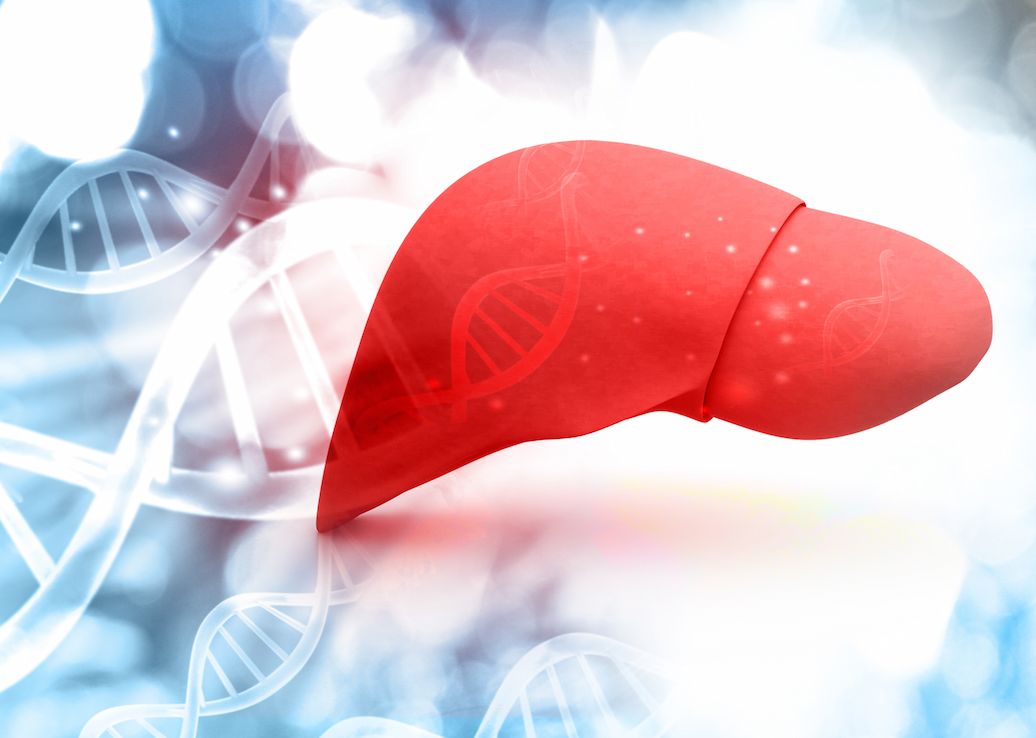First-Line Radiotherapy Combo May Show Benefit in Oligoprogressive HCC
First-line systemic therapy plus radiation therapy improved PFS vs second-line systemic therapy with or without radiation in hepatocellular carcinoma.
First-line systemic therapy plus radiation therapy improved PFS vs second-line systemic therapy with or without radiation in hepatocellular carcinoma.

Maintaining first-line systemic therapy plus radiation therapy (m-FLST + RT) for oligoprogressive lesions may offer clinical benefit without the need for switching to second-line systemic therapy (s-SLST) with or without radiation therapy in the treatment of patients with oligoprogressive hepatocellular carcinoma (HCC), according to results from a study published in the International Journal of Radiation Oncology, Biology, Physics.
With a median follow-up of 8.4 months (range, 0.5-72.0), the median progression-free survival (PFS) of all patients was 4.4 months (range, 0.5-24.5); the PFS rate was 38.0% at 6 months, 13.0% at 12 months, 5.9% at 18 months, and 3.9% at 24 months.
In the group of patients who received m-FLST + RT, the median PFS was 8.6 months vs 3.1 months with s-SLST without RT (HR, 3.163; 95% CI, 2.133-4.690; P < .001). Compared with the s-SLST + RT group (median PFS, 5.8 months), m-FLST + RT remained favorable (HR, 2.183; 95% CI, 1.110-4.293; P = .006). For patients in the m-FLST + RT group, the 6-month PFS rate was 67.1%, the 12-month rate was 41.8%, the 18-month rate was 21.2%, and the 24-month rate was 14.2%. For those in the s-SLST + RT group, the 6-month and 12-month PFS rates were 48.5% and 8.6%; in the s-SLST without RT group, the 6-month rate was 21.4%.
Subgroup analyses showed that in patients with Barcelona Clinic Liver Cancer (BCLC) stage C disease (n = 130), the median PFS for those treated with m-FLST + RT was 8.3 months vs 2.5 months with s-SLST alone (HR, 3.404; 95% CI, 2.206-5.245; P < .001); the difference between m-FLST + RT and s-SLST + RT was not statistically significant in this subgroup (HR, 1.780; 95% CI, 0.927-3.419; P = .051).
Among those with subtype B oligoprogression (n = 119), the median PFS for m-FLST + RT (11.6 months) was significantly longer than the median PFS for s-SLST without RT (3.0 months; HR, 3.511; 95% CI, 2.271-5.429; P < .001) and for s-SLST + RT (5.0 months; HR, 2.447; 95% CI, 0.896-6.682; P = .016).
Univariate analysis evaluated the effect of RT dose on PFS in those with oligoprogressive HCC, and it was found that the biologically effective dose did not significantly affect the median PFS in either RT group (P = .078).
“The results of this nationwide, multicenter, retrospective study suggest that maintaining FLST while incorporating [RT] for the treatment of oligoprogressive HCC, without switching to SLST, may offer significant clinical benefits,” wrote senior study author Jinbo Yue, MD, PhD, of the Department of Radiation Oncology at Shandong Cancer Hospital and Institute, Shandong First Medical University, and Shandong Academy of Medical Sciences in China and coauthors in the paper. “This approach not only enhances treatment strategies for oligoprogressive HCC but also provides valuable insights into future clinical practice.”
A total of 540 patients were included in the retrospective analysis; those who were eligible had HCC and experienced oligoprogression after at least 3 months of systemic therapy. Additionally, patients were 18 years or older with pathologically or radiologically confirmed primary disease and were deemed suitable for RT after consultation with the multidisciplinary teams at each center. Exclusion criteria included oligoprogression within 3 months of treatment with FLST, an ECOG performance status of 3 or 4, and incomplete clinical data.
FLST before oligoprogression was targeted therapy or immunotherapy in 35.1% of patients and targeted therapy plus immunotherapy in 64.9% of patients; FLST after oligoprogression was targeted therapy or immunotherapy in 39.6% and targeted therapy plus immunotherapy in 60.4%.
In the overall patient population, complete responses (CRs) or partial responses (PRs) were achieved by 40.5% of the m-FLST + RT group, 20.8% of the s-SLST + RT group, and 12.5% of the s-SLST alone group. Chi-square test results and post hoc analyses also showed significant differences between each pair of groups in the proportions who achieved CR or PR (χ2 = 14.9; P < .05).
The most frequent pattern of recurrence in the m-FLST + RT group was new metastatic lesions (37.9%); in the s-SLST + RT group, it was re-enlargement of the most recent oligoprogressive lesions after FLST (31.8%); and in the s-SLST alone group, it was re-enlargement of the most recent oligoprogressive lesions after FLST (50.0%). There were no differences in the types of recurrence between the 3 treatment groups (χ2 = 12.2; P = .06).
Reference
Leng B, Wang H, Ge Y, et al. Maintaining first-line therapy plus radiation therapy may prolong progression-free survival and delay second-line therapy for oligoprogressive hepatocellular carcinoma. Int J Radiat Oncol Biol Phys. 2025;122(2):325-338. doi:10.1016/j.ijrobp.2024.12.039